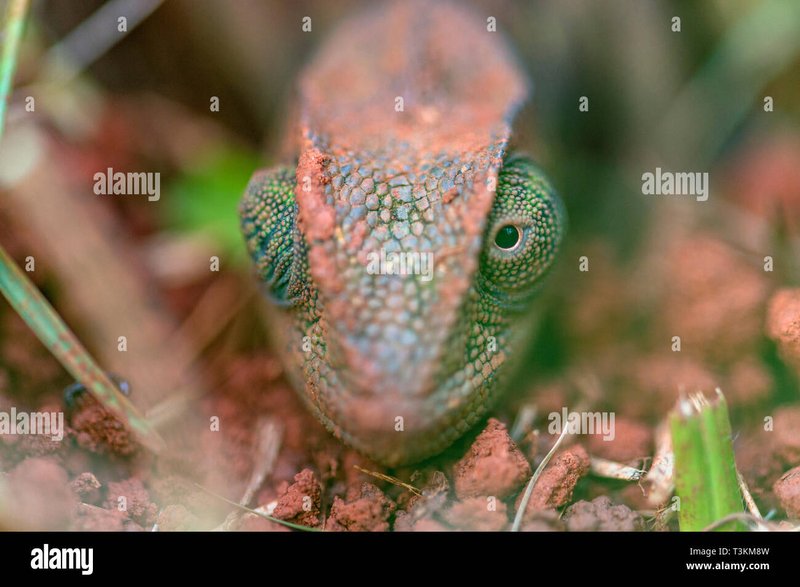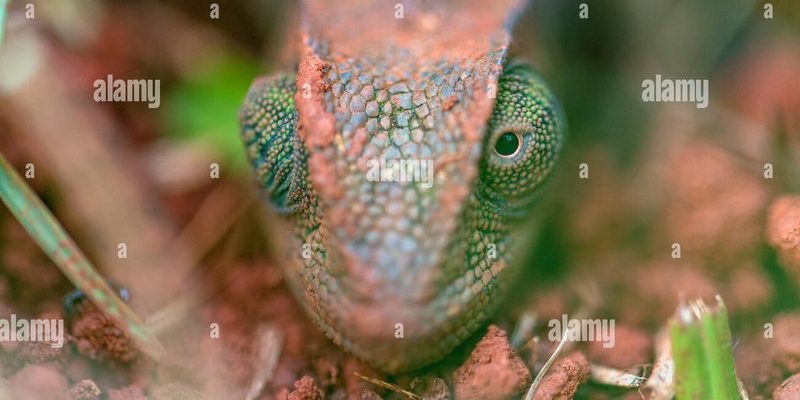
If you’ve ever thought about breeding flap-necked chameleons, you might be feeling a mix of excitement and uncertainty. What do these creatures need? What challenges might you face? By learning more about their habitat, diet, breeding behaviors, and potential hiccups along the way, you’ll be better prepared to embark on this journey. Let’s dive into the world of flap-necked chameleons and explore what it takes to breed them successfully.
Understanding Flap-Necked Chameleons
Flap-necked chameleons, known scientifically as *Chamaeleo dilepis*, are native to various regions in Africa. These vibrant lizards are named after the unique flap of skin on their necks that they can expand and contract. This ability not only adds to their beauty but also helps them communicate and regulate their body temperature. Imagine wearing a colorful scarf that you can puff up when you want to make a statement!
These chameleons are known for their impressive color-changing capabilities, which they use for camouflage and social interaction. When breeding, it’s essential to understand their social behaviors because introducing two chameleons isn’t always as simple as placing them together. They can be territorial, especially males, so careful introductions are crucial for a harmonious pairing.
Creating the Right Habitat
To set the stage for successful breeding, you’ll need to create an ideal habitat. Think of it like arranging a cozy den that caters to all their needs. Here are some key components to consider:
- Temperature: Flap-necked chameleons thrive in a warm environment. Aim for a basking area around 85°F to 95°F and a cooler area that stays between 70°F to 75°F.
- Humidity: These lizards love humidity! Keeping humidity levels between 50% and 70% is crucial. Regular misting can help maintain these levels.
- Lighting: UVB lighting is necessary to aid in calcium absorption and overall health. A 10-12 hour light/dark cycle mimics their natural environment.
Setting up your flaps-necked chameleons’ habitat may take time and research, but it can be rewarding. A well-designed environment not only encourages breeding but also keeps your chameleons happy and healthy.
Dietary Needs for Healthy Breeding
Just like you wouldn’t host a dinner party without some delicious food, providing a proper diet is essential for breeding flap-necked chameleons. They are insectivores, so their diet mainly consists of various live insects. Here’s a quick breakdown of what to feed them:
- Crickets: A staple in their diet. Make sure they’re gut-loaded with nutritious foods beforehand.
- Roaches: Dubia roaches are a great source of protein. They’re easy to digest and can be a fun treat.
- Mealworms: Offer these sparingly, as they are higher in fat compared to other insects.
Maintaining a balanced diet is crucial, especially during the breeding season. You might be wondering if you should supplement their food. The answer is yes! Dusting insects with calcium and vitamin supplements can help ensure your chameleons get what they need for healthy breeding.
Breeding Behavior and Mating
When it comes to breeding flap-necked chameleons, understanding their mating behavior is key. Males often display vibrant colors and expand their neck flaps to attract females. It’s their way of saying, “Hey, look at me!” However, this display can also lead to some competition between males.
When introducing a male and female, it’s best to do so in a neutral territory, like a separate enclosure. This way, they can observe each other’s behavior without feeling threatened. You might notice aggressive behavior, such as head-bobbing or hissing—these are normal, but if they escalate, it might be time to separate the chameleons.
Once they mate, the female will eventually lay eggs. This process can take a bit of time, as females may require a calm and stress-free environment to feel comfortable enough to lay.
Challenges in Breeding Flap-Necked Chameleons
While breeding flap-necked chameleons can be an exciting adventure, it’s essential to be aware of potential challenges. Here are a few roadblocks you might encounter:
- Stress: Chameleons can be sensitive creatures. Stress from handling or sudden changes in their environment can impact their willingness to breed.
- Health Issues: Make sure both your male and female are in good health. Illness can lead to complications during mating or egg-laying.
- Egg-Laying Problems: Females sometimes struggle to lay eggs, leading to a condition called egg-binding. Providing a suitable laying box with a mixture of sand and soil can help.
Being proactive and monitoring your chameleons can make a big difference. Regular check-ups with a veterinarian who has experience with reptiles can also help you stay ahead of any health concerns.
Caring for Eggs and Hatchlings
Once your female lays her eggs, the journey isn’t over—now you have to care for those eggs and the little ones that will hatch. The egg incubation period for flap-necked chameleons generally lasts about six to eight weeks, depending on temperature and humidity.
You’ll need to create a safe and warm environment for the eggs. Here’s how:
- Incubation Container: Use a container filled with slightly moist vermiculite or perlite to nest the eggs. Ensure it’s kept at a steady temperature around 75°F to 82°F.
- Humidity: Monitor humidity levels carefully to avoid drying out the eggs. Too much moisture can cause mold, so finding that balance is key.
- Hatchling Care: Once the tiny chameleons make their entrance, provide a suitable environment with ample hiding spots and a diet of tiny insects. Think of it as setting up a nursery for your little ones!
Watching them grow can be one of the most rewarding aspects of breeding flap-necked chameleons.
Breeding flap-necked chameleons can be a fulfilling experience that requires careful planning, patience, and a bit of love. From creating the right environment and providing the proper diet to understanding their behaviors and challenges—each step is vital to the success of breeding.
Remember, it’s like nurturing a delicate ecosystem. The effort you put into understanding and meeting their needs will directly influence the health of your chameleons and their offspring. Whether you’re a seasoned reptile enthusiast or a curious beginner, embracing this journey can lead to beautiful rewards. Happy breeding!

